TIDT235 April 2021
4.2 Output Voltage Ripple
The output voltage ripple of the TPS61391 is shown in the following figures. It is also the input voltage ripple of the TPS7A4101.
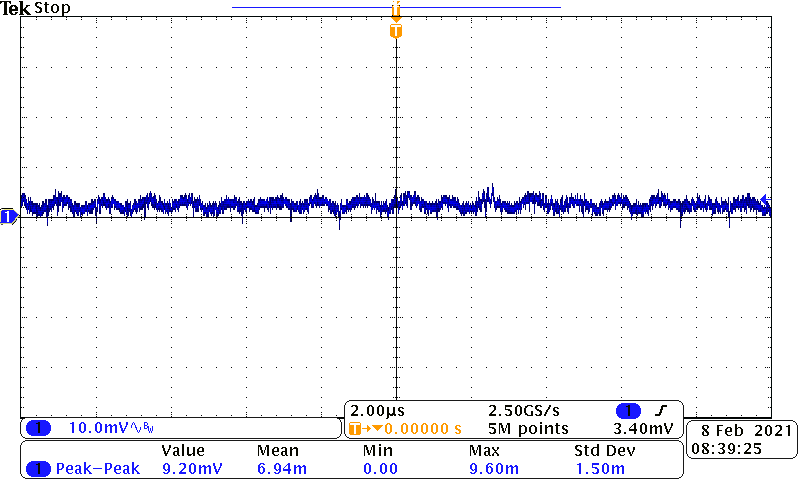
CH1:
VOUT(Boost)
Figure 4-5 3.3-V Input, 48-V no
Load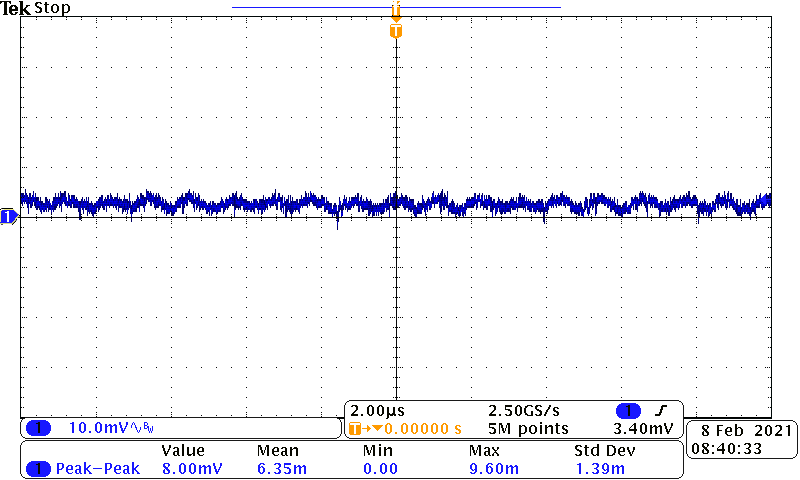
CH1:
VOUT(Boost)
Figure 4-7 5-V Input, 48-V no
Load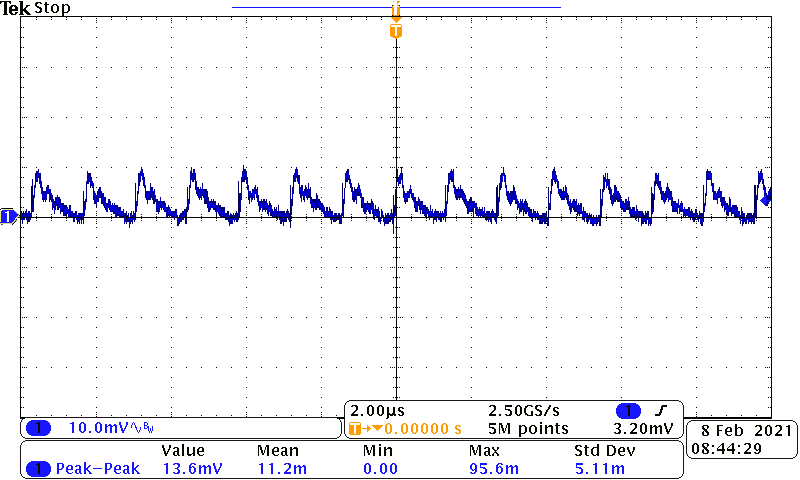
CH1:
VOUT(Boost)
Figure 4-6 3.3-V Input, 48-V, 10-mA
Load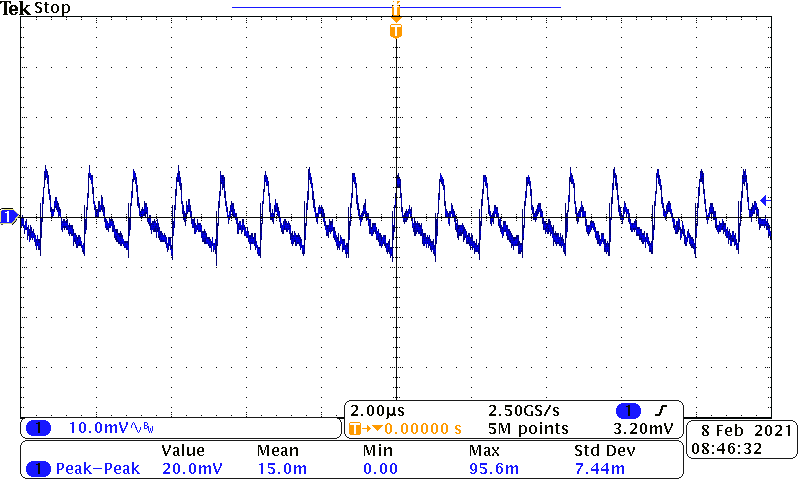
CH1:
VOUT(Boost)
Figure 4-8 5-V Input, 48-V, 20-mA
LoadThe output voltage ripple of the LDO is shown in the following figures.
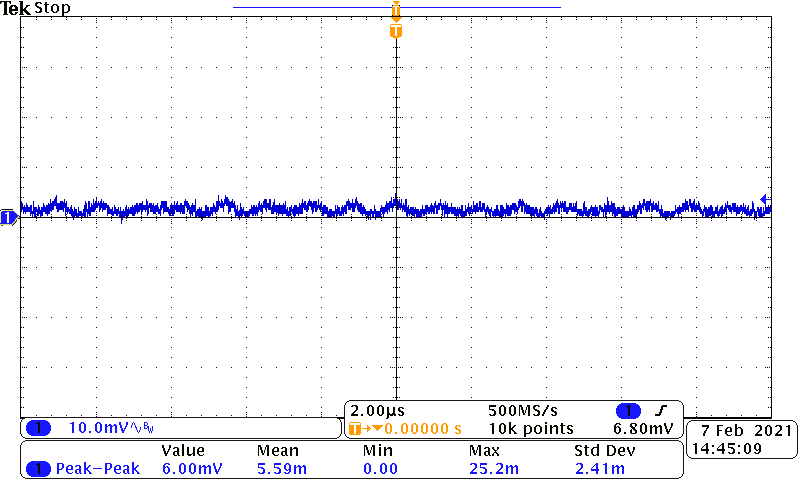
CH1: VOUT
Figure 4-9 3.3-V Input, 48-V no
Load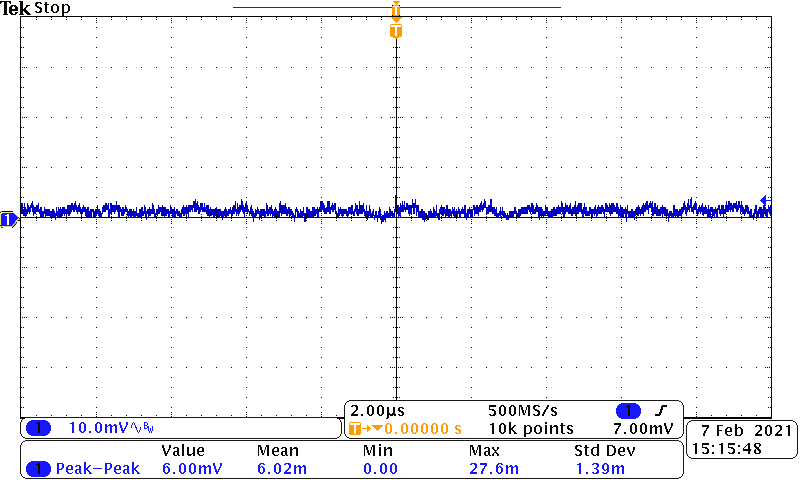
CH1:
VOUT(Boost)
Figure 4-11 5-V Input, 48-V no
Load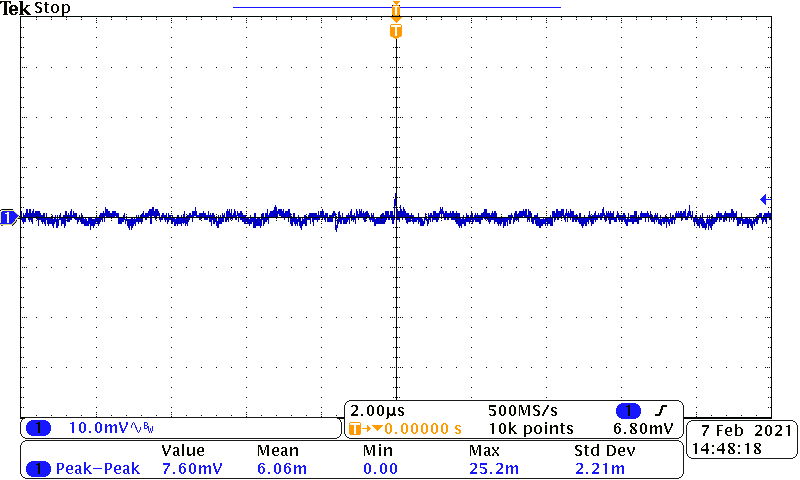
CH1: VOUT
Figure 4-10 3.3-V Input, 48-V, 10-mA
Load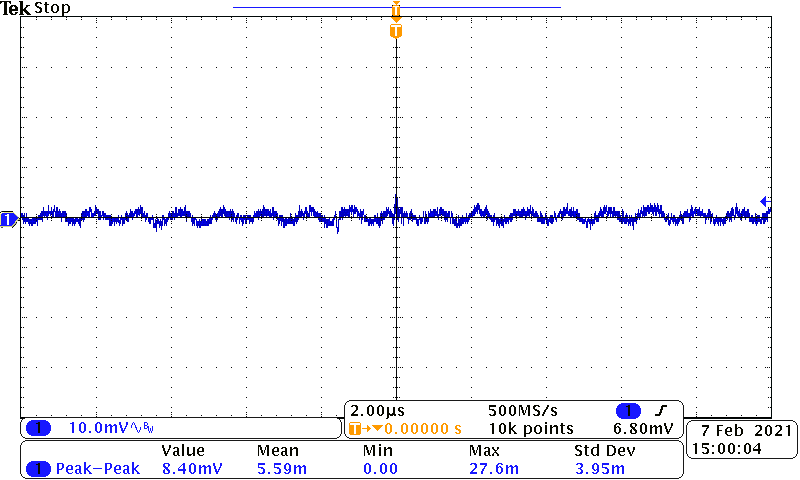
CH1:
VOUT(Boost)
Figure 4-12 5-V Input, 48-V, 20-mA
Load